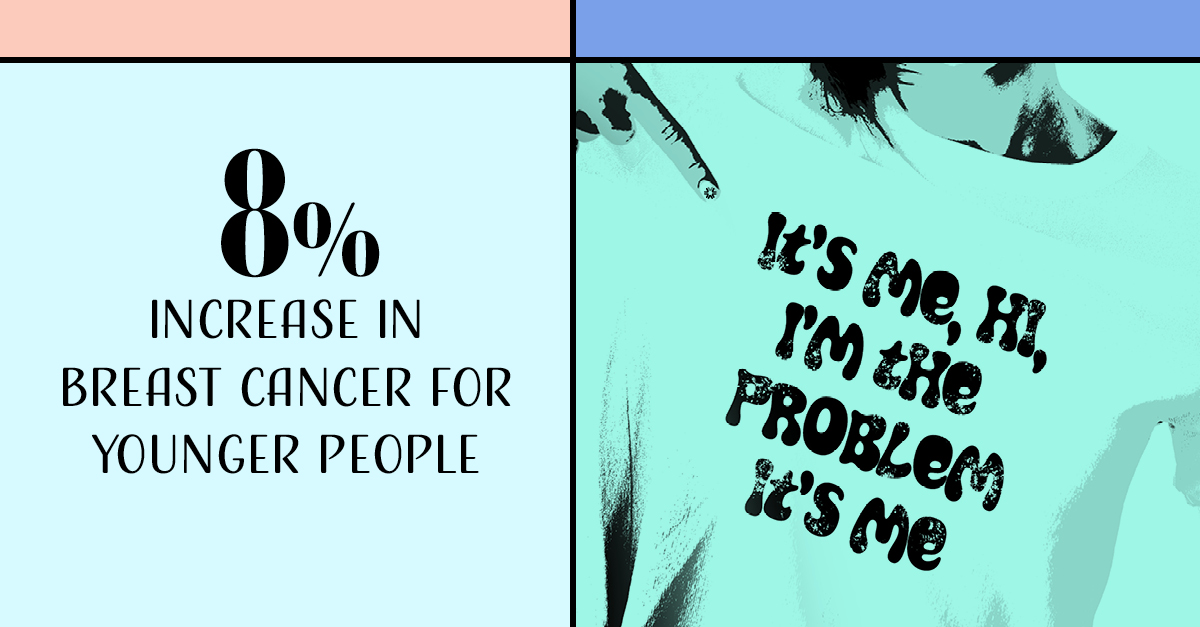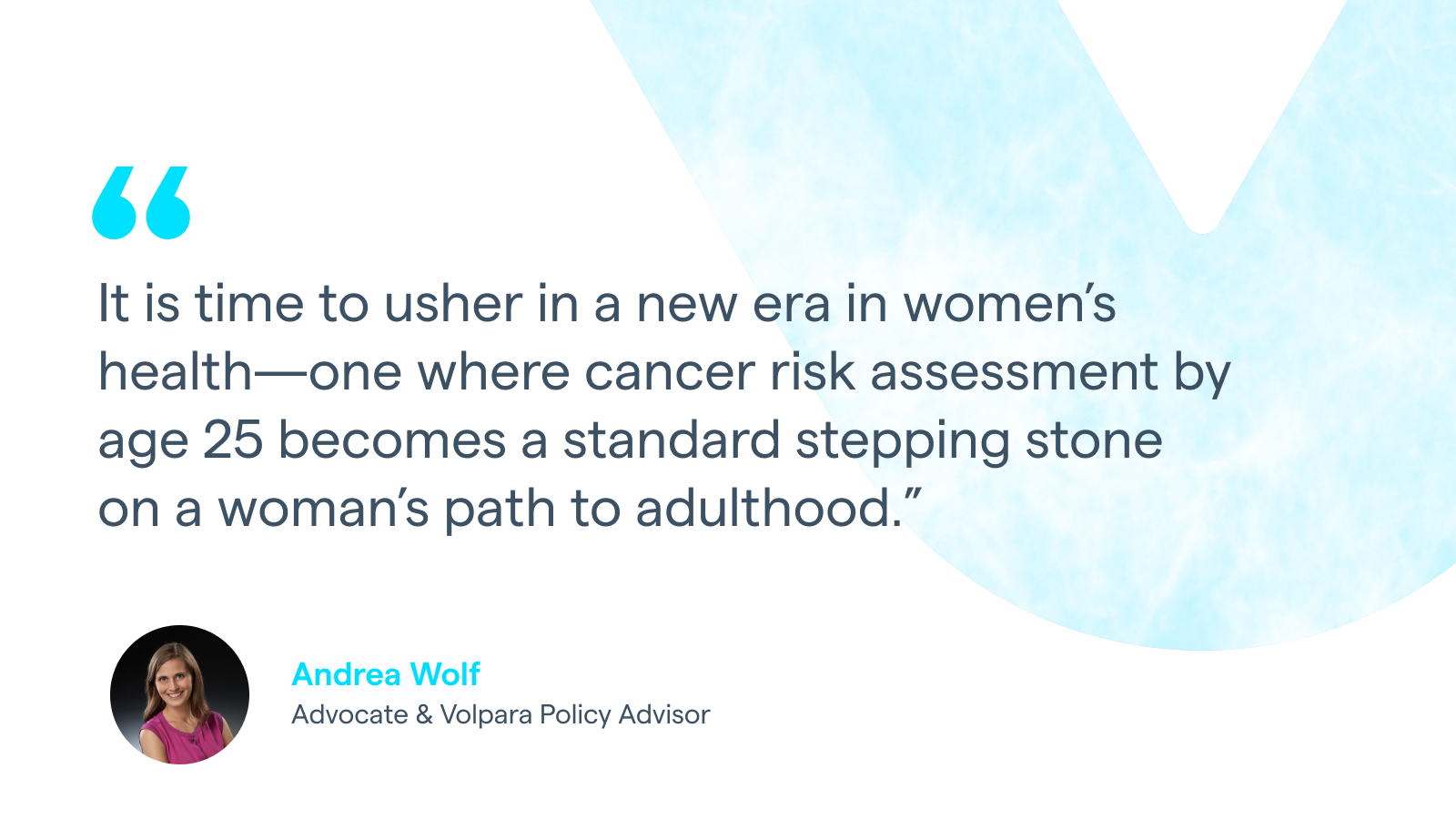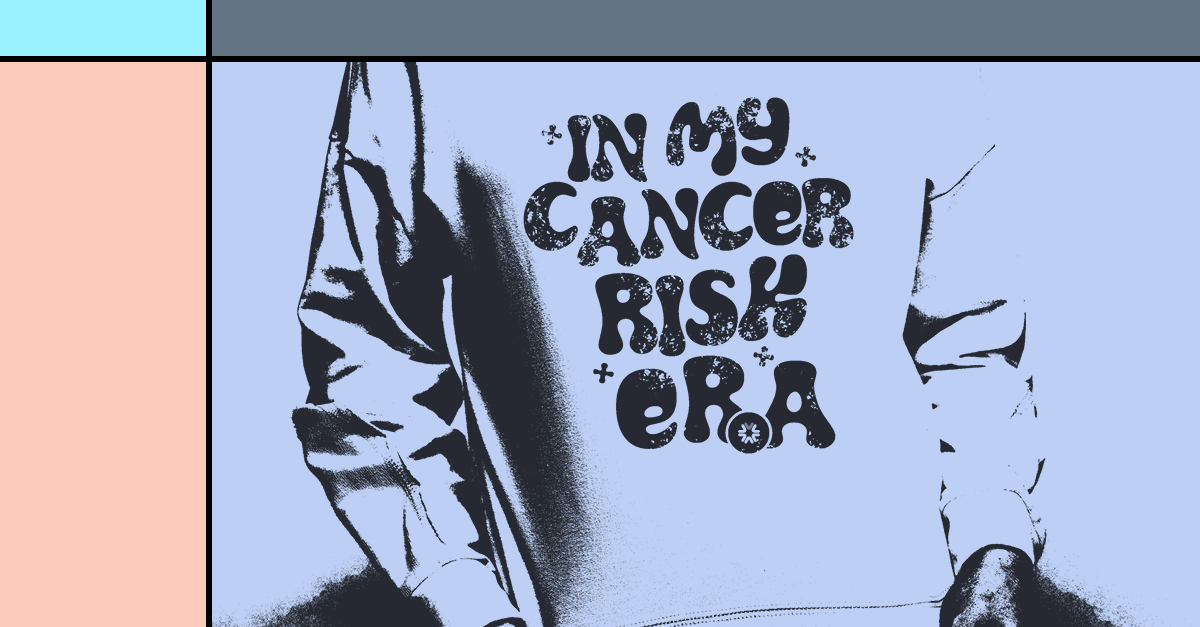On October 27th, Taylor Swift released her 1989 Album – Taylor’s version. Her Eras Tour has taken the world by storm. Her Eras Tour helps all of us – young and old – mark milestones in our lives and reminisce about the joys and tribulations of growing up.
Until recently, the list of milestones and fears about growing up did not include cancer. Cancer was for older people. Not anymore. It is time to usher in a new era in women’s health—one where cancer risk assessment by age 25 becomes a standard stepping stone on a woman’s path to adulthood.
To put this into perspective, let’s consider that, thus far, approximately 3,796,000 women attended a Taylor Swift Eras concert. More than 455,520 of these fans will be diagnosed with breast cancer at some point in their lives – many of them at younger ages than they believed possible.

On August 16, 2023, the Washington Post published an article entitled Cancer Among Younger Americans Is On The Rise, New Study Shows. This article shed light on a large, longitudinal study showing that the incidence of cancer in people between the ages of 19-40 significantly rose between 2010-2019. But the news is even worse for young women and breast cancer. Their incidence increased by 8%. Breast cancers in younger women tend to be more aggressive…and more lethal.
On average, women between ages 21-44 are diagnosed at Stage II (or later), whereas women older than 45 are more often diagnosed at Stage I. In 2020, the American Cancer Society estimated that over 11,000 women under age 40 would be diagnosed with breast cancer and over 1,000 would die from the disease.
But this is not a fait accompli. If young women demand earlier cancer risk assessment, far fewer will suffer – and die – from breast cancer. Thanks to advanced technologies, we can easily include breast cancer risk assessment on the list of milestones marking a woman’s entrance into adulthood—without adding significant time or pain to her routine care.

We have countless correlations between social acceptance of medical advancements and saved lives. In 2006, the CDC recommended HPV vaccinations. Since then, HPV infections that cause most HPV-cancers and genital warts have diminished by 88% among teen girls and by 81% among adult women. In 2021, after the COVID vaccine was introduced, there were 670,000-680,000 fewer hospitalizations and 330,000-370,000 fewer deaths among Medicare beneficiaries. Models suggest that 800,000 lung cancer deaths were averted between 1975-2000 because so many people stopped smoking. But we still have a long way to go when it comes to breast cancer.
Mammograms have drastically changed outcomes and averted deaths. In the 1980’s mammograms became commonplace. Since then, breast cancer deaths have dropped by 43%. Women screened regularly for breast cancer have a 47% lower likelihood of dying from breast cancer within 20 years of diagnosis. But mammography is not the only major change in breast cancer screening. Ultrasound and other essential screenings in women with dense breast tissue have led to an increased detection rate of 1.9%-4.2%. These developments signify major strides for women. But we can do better.
Visionary medical systems and leaders are already integrating early breast cancer risk assessment into standard practice. For example, Dr. Betsy Winga is leading the charge at Advocate Health. She uses automation and innovation to integrate a previously burdensome assessment to become streamlined into routine care. This workflow can be easily adopted by other health systems nationwide – but we, as a society, must change our culture and our approach.

The word “Era” means “a distinct period with a particular feature or characteristic.” For breast cancer, the recent FDA rule requiring all women to know their breast density on mammograms was a huge step towards earlier detection and less suffering. But we are far from done.
Passing legislation ensuring that screenings beyond mammograms for high-risk women are covered by insurance and universal risk assessment by age 25, will save so many more lives. Let’s use Taylor Swift’s Eras Tour to mark a new era in women’s health. The time is now. We cannot wait.

